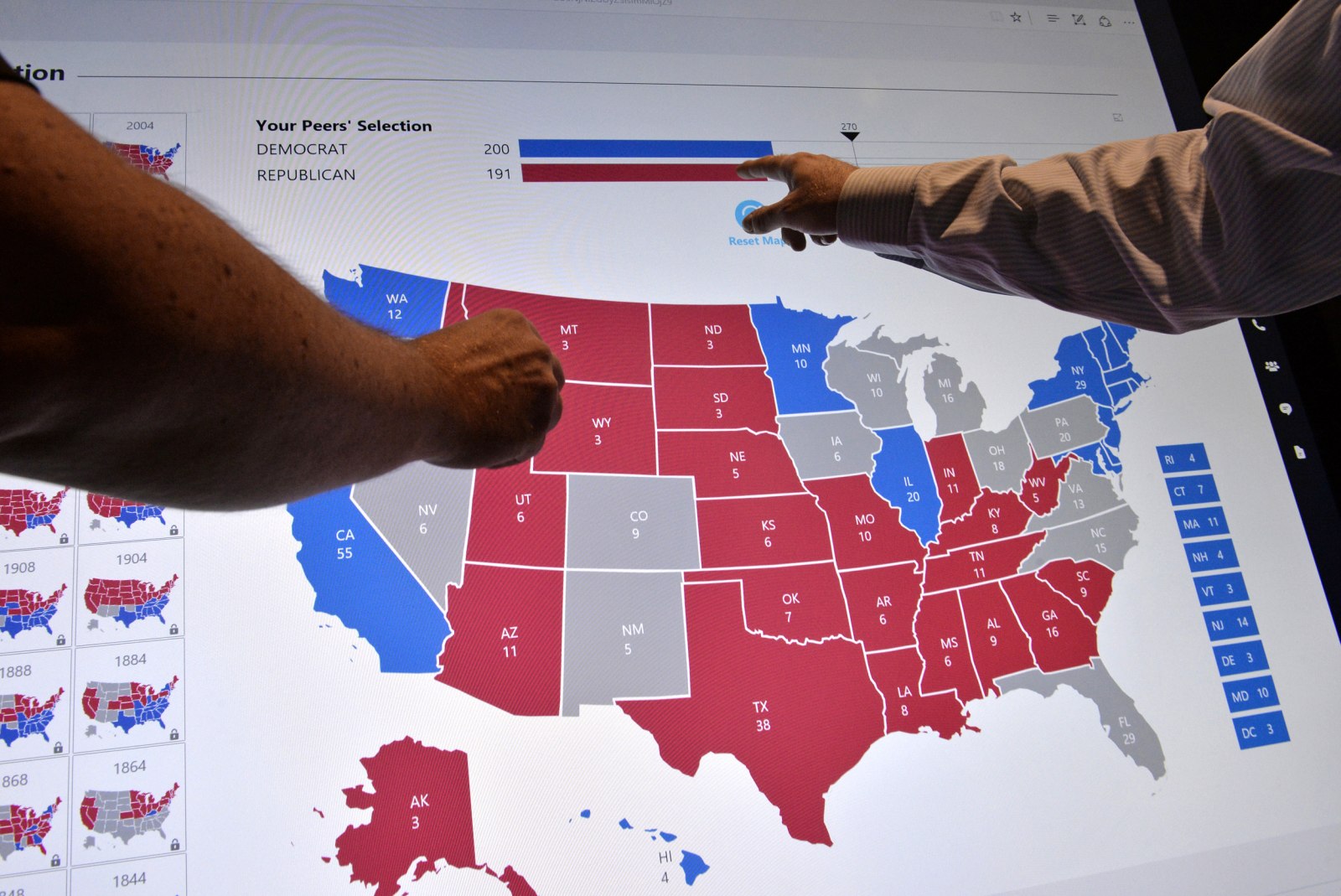The Electoral College is perhaps the most unique element to elections in the United States. Aside from the power of the White House and the amount of money that goes into campaigns, the way in which votes are counted is unique to the United States. This article is designed to be a refresher for American audiences, and an introduction for worldwide audiences, into the history of the Electoral College, how the system works, and what to look out for on Election Day.
So what exactly is the Electoral College?
The Electoral College is a system of counting votes, designed by the Founding Fathers of the United States. The system was designed in such a way that meant each state was meant to hold roughly equal voting power when it comes to an election. In theory, this means that the powerful states at the time, such as New York and Pennsylvania, couldn’t decide elections at the expense of the voice of smaller states.
The Constitution of the United States sets forward that each state is entitled to a number of Electoral College votes equal to their number of Senators plus their number of Representatives in the House. Each state is required to have two Senators. So for example, California has 53 Representatives in the House and two Senators, so California has 55 Electoral College votes. Wyoming and Alaska both have just one Representative in the House, with a total of three Electoral College votes each.
Interestingly, these Electoral College votes are actual people! When a state has determined how its vote will be cast, a group of people called “Electors” meet to certify and officially “cast” the state’s vote.
In total, there are 538 Electoral College “Elector” votes up for grabs in each election.
Here’s how each state’s Electoral College votes look on a map.
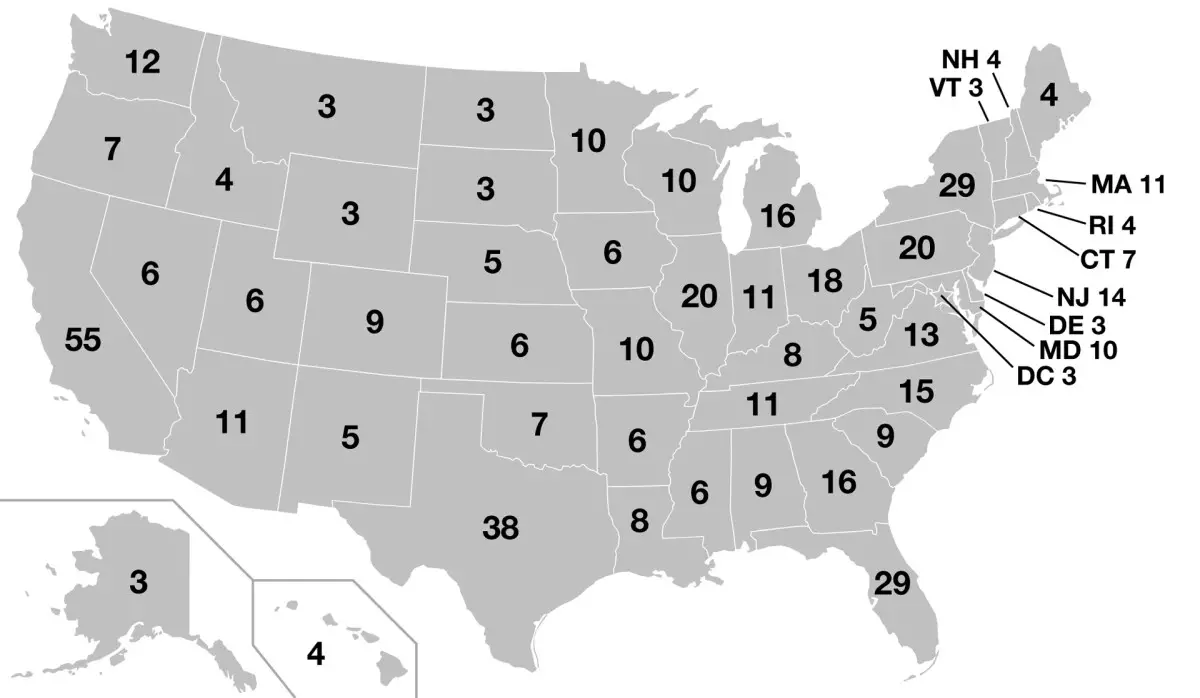
How does the Electoral College work?
It’s pretty simple actually. The winner of a state’s popular vote wins all of a state’s Electoral College votes. Only in Maine (ME) and Nebraska (NE), with the asterisks next to them, apportion their Electoral College votes differently. Here, each of the states’ two Congressional districts is given one Electoral College vote. That leaves two for the winner of Maine’s overall vote winner, and three for the winner of Nebraska’s overall vote winner.
The winner of a majority of Electoral College votes wins an election. This means a candidate needs 270 Electoral College votes to secure an election.
This is a reminder of how 2016’s Electoral College map looked after all the votes were counted.
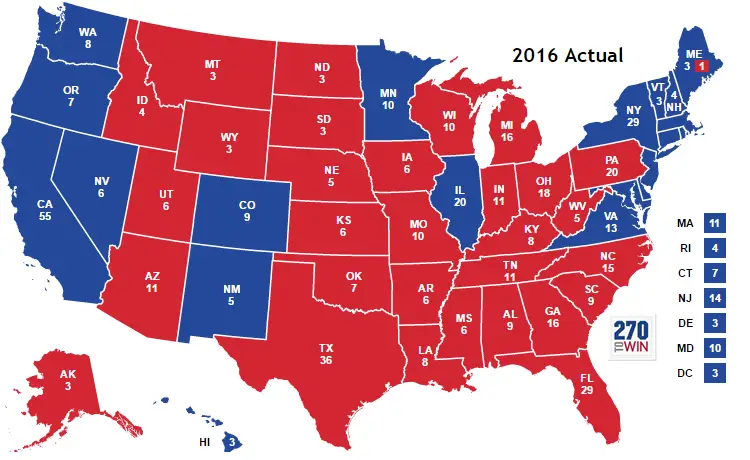
Nebraska is solid red because Republicans won its three statewide votes and both of its Congressional districts. Maine has a stripe of red through it because Democrats won its statewide vote and its first Congressional district, but Republicans picked up its second Congressional district.
Wait, a number like 538 can be split exactly in half…
You’re right, there is a tiny, but mathematically possible, chance that the Electoral College could be split exactly 269-269 for both sides. Here’s just one example of how that could happen.
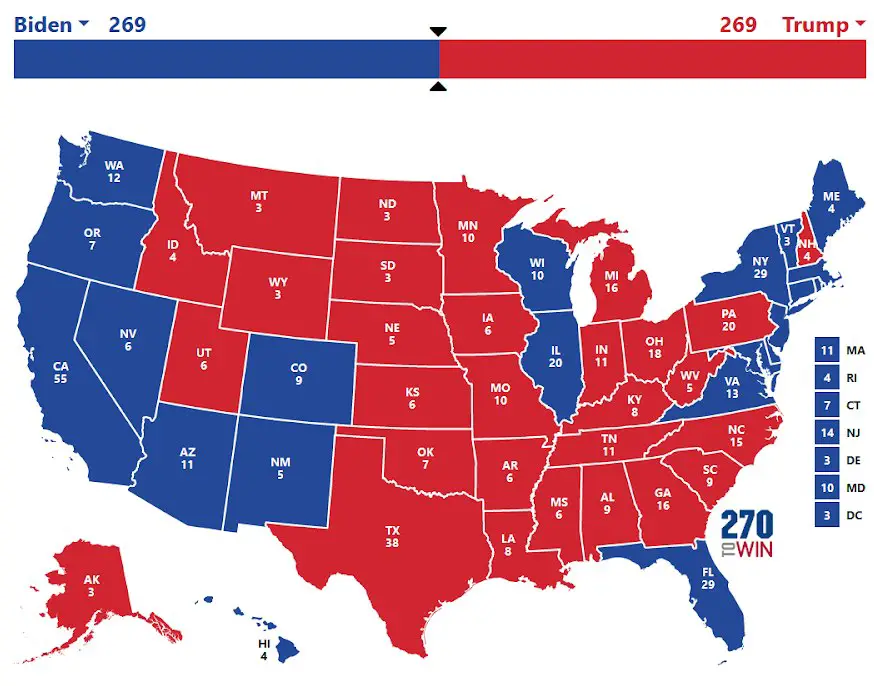
This is an unlikely outcome for several reasons, but nevertheless, it is proof that a 269-269 tie is possible.
In that instance, the newly-elected House of Representatives will determine the winner of the presidential election. However, the House’s powers work slightly differently. In the instance where it is required to determine an election, each state’s Representatives get one vote between them. A simple majority – 26 out of 50 – of states determine who the next president will be.
For a state like California with 53 Representatives, all 53 come together and cast one vote for who the next president will be. Where a state has an even number of Representatives, such as Pennsylvania, if the Representatives are evenly split, a state might simply just not cast a vote instead.
In the current makeup of the House, 26 states have a majority-Republican Representative delegation, and 20 have a majority-Democratic delegation. The other four are evenly split.
In this instance, at a 269-269 Electoral College tie in 2020, and with the House makeup remaining the same, the House would more than likely decide to re-elect President Trump to another term.
What do the critics say?
Unfortunately, as novel an idea as the Electoral College is, it has attracted a fair amount of criticism over its 240 years! Mathematically speaking, in terms of ratio of people living in a state to its Electoral College representation, some states are overrepresented, even with the minimum of three Electoral College votes.
An example of this is Wyoming. With a population of just 563,626 – according to the census in 2010 – and three Electoral College votes, this means that one Electoral College vote in Wyoming is apportioned for every (roughly) 188,000 people. In California however, with 55 Electoral College votes and a population of 37,253,956, one Electoral College vote is apportioned for every 677,345 people. Although California does have a much higher population, its Electoral College votes are less representative of the state as a whole, as each Electoral College vote has to represent more people.
2016 also highlighted another problem with the Electoral College: faithless electors. These are members of the Electoral College who refuse to vote for the candidate they are designated to vote for after the election results are counted. While the map above suggests that 232 Electors voted for the Democrats and 306 voted for the Republicans, in actual fact the result was slightly different. Including faithless electors, the result actually looks like this map below.

The actual results were 227 votes for the Democrats (as four Electors in the state of Washington voted for other candidates, as did one in Hawaii) and 304 for the Republicans (with two faithless electors in Texas).
We also see that, with such high numbers of Electoral College votes in states like California, Texas, and New York, only a few states ever really determine an election. California and New York and both reliably Democratic states, but states like Florida, Pennsylvania, and Ohio are all swing states. As a result, states like California which are worth a high number of Electoral College votes, but are safe states, receive little attention from election candidates. States like Florida and Ohio, as battleground states, see lots of attention and lots of money (and visits from the candidates themselves!).
So how does the Electoral College stay up to date?
Well, with every census the government gets new information about its population. With that information comes a slight adjustment of each state’s Electoral College votes. With this election taking place in 2020, this is the last time the electoral map will look like this as a census nears completion. It’s likely that in 2021, Illinois will lose some of its Electoral College votes, and states like Florida will almost certainly gain.
Some of the power is also slowly being taken away from the Electoral College by the will of the states themselves. The National Popular Vote Interstate Compact (NPVIC) is an agreement between fifteen states and the District of Columbia to award all of their Electoral College votes to the winner of the national popular vote, as opposed to the winner of just the state’s popular vote winner.
However, it is not currently law yet as it is still short of the 270 Electoral College votes it would need to supersede the current system. The NPVIC is also mired in legal controversy, so it could be a few elections before we see such a revamp of the Electoral College system!
Below is a table of the states that have signed up to the NPVIC and the number of Electoral College votes they are worth.
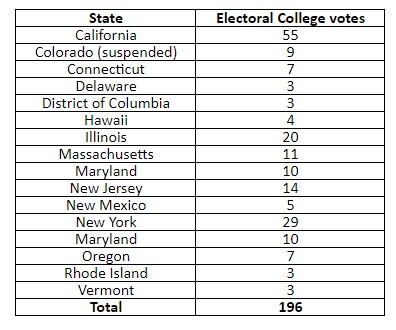
The Electoral College is a unique and complex voting system on paper, but when you get into it, it is a very simple system to understand. On Election Day, watch out for the states of Florida, Ohio, and Pennsylvania. These three states are all battleground states in the 2020 presidential election, and combined are worth 67 Electoral College votes; enough votes to majorly tip an election one way or another. Put simply, winning the Electoral College is the only way a candidate can win an election, and all the attention will be on that magical number of 270 Electoral College votes.
